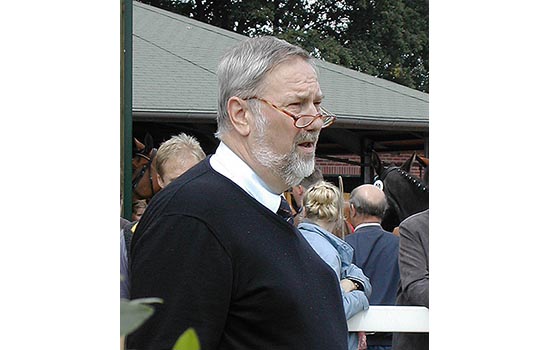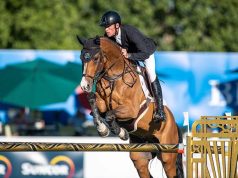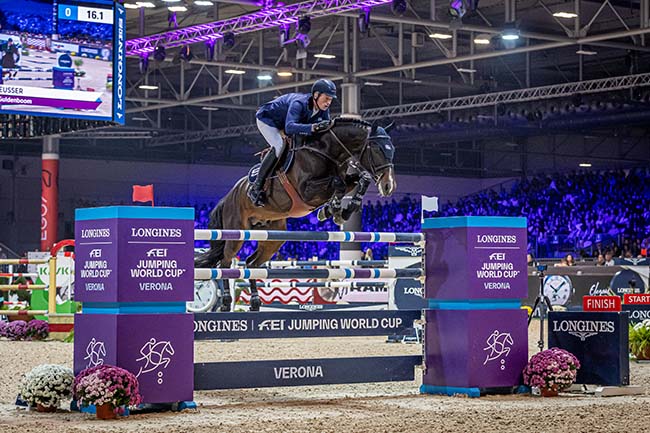GERMANY (by Christopher Hector) Dr Roland Ramsauer is a walking historical reference when it comes to horse breeding, particularly Oldenburg breeding –which is not surprising since he literally wrote the book: Das Oldenburger Sportpferd in collaboration with photographer Werner Ernst. The book was published in 1978 an absolutely crucial year in the transformation of the old Oldenburg Coach and Agricultural horse to the new, modern sport horse.
As breeding director of the Oldenburg Verband, Dr. Ramsauer played a key rôle in that transformation. Now, at the age of 73, he shows no sign of slowing down, and continues to help shape the destiny of one of Germany's most successful studs – Sprehe – established in 2000.
Q I can remember at the time, some of the older established studs were saying, ‘oh it's just another couple of rich guys, they won't last long...’ and, actually, all the old studs have disappeared and Sprehe is still standing! What has been the reason for the stud's success?
Sprehe Stud has been very successful because Mr Albert Sprehe had one ver y important idea. He said, ‘I don't want to see any breed- er on my own stud – Roland you travel all over Germany and visit the breeders, talk to them, help them decide which stallions they want to breed with, and then we can be successful.’ It was very successful, and after two years, he said, ‘Roland you cannot handle that any more, you need help, and that's the reason we have six breeding advisors travelling around. Nowadays, the [breeding] farmers do not have so many workers that they can take the time to come and visit the stud. They have the catalogue, they have the DVDs to view the stallions, and they can still get the advice about their mare. I think that is why we are so successful. After Paul Schockemöhle and Van der Lageweg in the Netherlands, I think we are number three of the top breeding stations.
Q Do you think another reason the stud is successful is that you didn't say, ‘okay we are a stud in Oldenburg so we will just have Oldenburg stallions’. Right from the start Sprehe featured the top stallions from all the breeding associations. I think in the first year Sprehe stood five licensing champions from all over Germany...?
I think one part of the success is that we don't just breed Oldenburg or Hanover, we split that, and today we have roughly 90 to 100 foals a year: 50 foals get an Oldenburg brand, 25 per- cent the Hanoverian brand, and the rest will be split between Holstein and Westfalia, so that is the reason that we are working with all the breeding associations together.”
[You would be very wrong to assume that Ramsauer, because of his history with the Oldenburg Verband, was a dyed-in-the-wool fan of the breed, quite the reverse. He is looking to the day when all the breed associations are merged into one German Sporthorse book...]
Of course, when I started 30 years ago, the breeder would ask, Oh what breed is Hickstead White? Or what breed is Fürst Wilhelm – today nobody asks. They all ask what is the stallion doing, they only look to the pedigree and they don't care if he has a Bavarian brand or an Oldenburg brand, or Netherlands or Holsteiner brand.
Q Is there still an Oldenburg horse, or do we just have a German sport horse – with the possible exception of Holstein and the Trakehners...?
That's exactly right. We have a German Sporthorse. Already in the south, the associations are working together and they don't say Brandenburg or Bavarian or Baden-Württemberger, they call it the German Sporthorse. In the north it is a little different, still Old- enburg or Hanoverian or Westfalian. But the customers who will breed and buy horses, don’t look at the brand, only the pedigree. If the pedigree is good, he buys the horse, for showjumping, or dressage, or whatever...
SUBSCRIBERS CAN READ THE COMPLETE ARTICLE IN THE CURRENT EDITION OF BREEDING NEWS.




